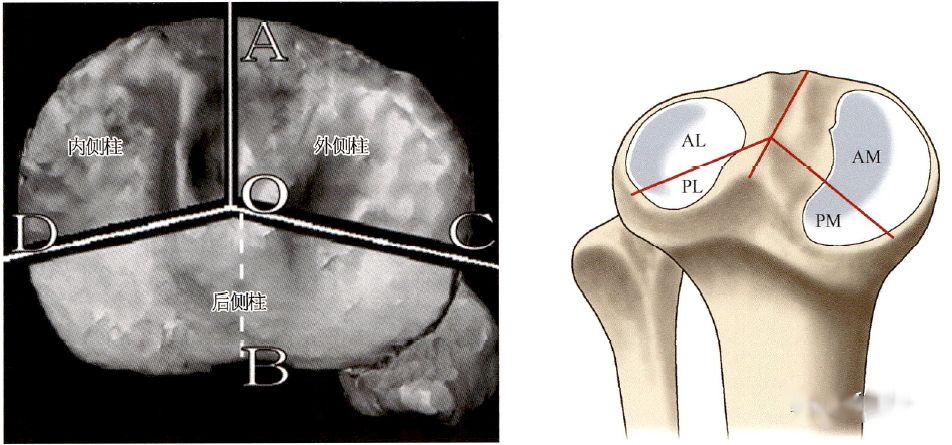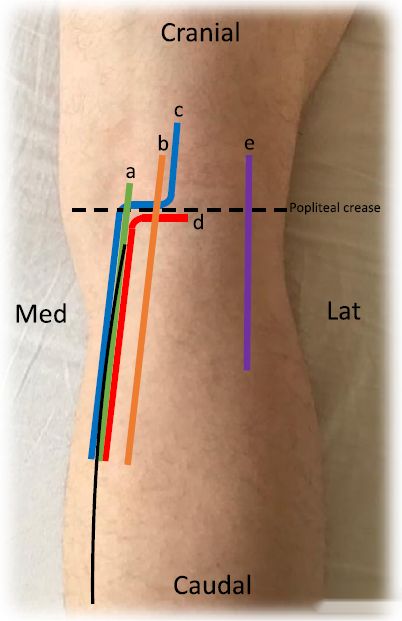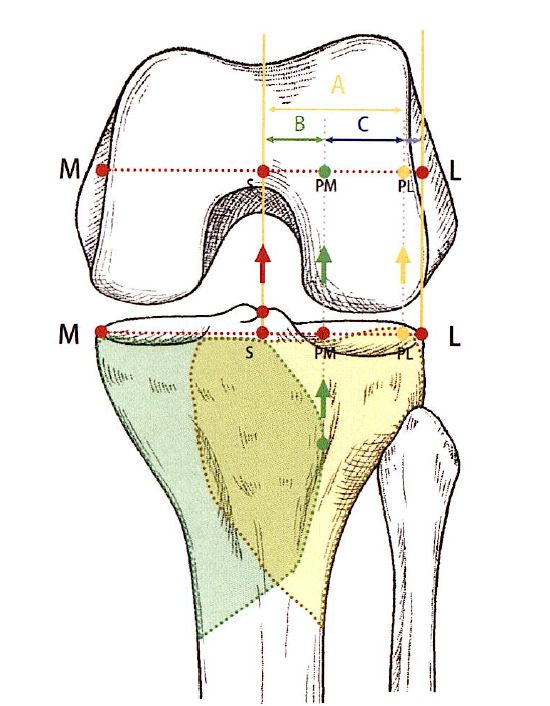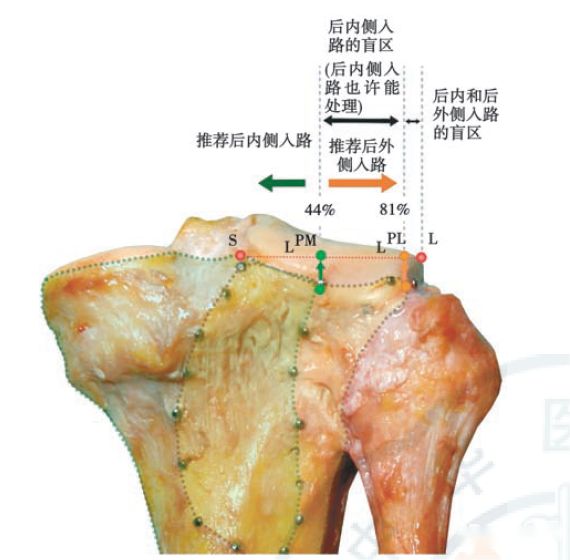“Repositioning and fixation of fractures involving the posterior column of the tibial plateau are clinical challenges. Additionally, depending on the four-column classification of the tibial plateau, there are variations in the surgical approaches for fractures involving the posterior medial or posterior lateral columns.”
The tibial plateau can be classified into three-column and four-column type
You have previously provided a detailed introduction to surgical approaches for fractures involving the posterior lateral tibial plateau, including the Carlson approach, Frosh approach, modified Frosh approach, the approach above the fibular head, and the lateral femoral condyle osteotomy approach.
For the exposure of the posterior column of the tibial plateau, other common approaches include the S-shaped posterior medial approach and the reverse L-shaped approach, as shown in the following diagram:
a: Lobenhoffer approach or direct posterior medial approach (green line). b: Direct posterior approach (orange line). c: S-shaped posterior medial approach (blue line). d: Reverse L-shaped posterior medial approach (red line). e: Posterior lateral approach (purple line).
Different surgical approaches have varying degrees of exposure for the posterior column, and in clinical practice, the choice of exposure method should be determined based on the specific location of the fracture.
The green area represents the exposure range for the reverse L-shaped approach, while the yellow area represents the exposure range for the posterior lateral approach.
The green area represents the posterior medial approach, while the orange area represents the posterior lateral approach.
Post time: Sep-25-2023














